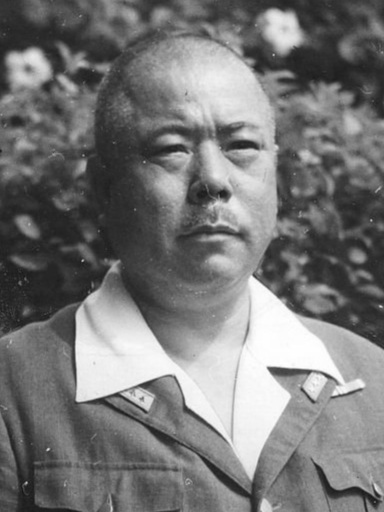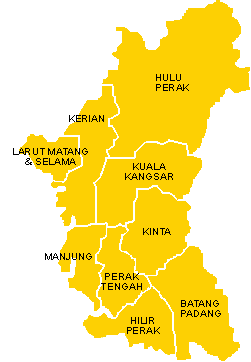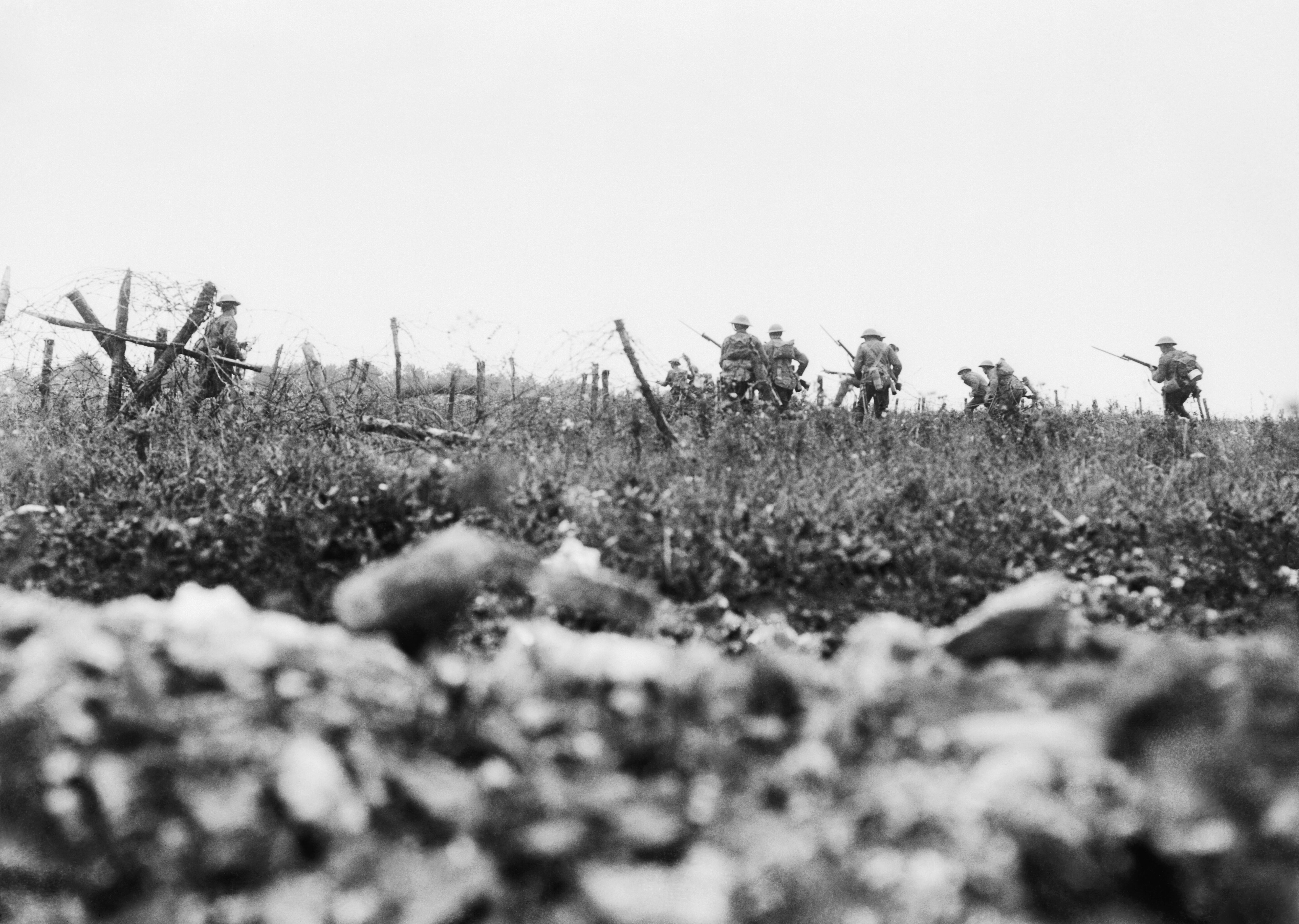|
British Battalion (Malaya 1941)
The British Battalion was an ad hoc formation created on 20 December 1941 during the Battle of Malaya. It was amalgamated from two regular British Army battalions *2nd Bn, East Surrey Regiment under Lieut-Col. G E Swinton MC and *1st Bn, The Leicestershire Regiment under Lieut-Col. Charles Esmond Morrison, OBE, MC Both battalions suffered heavy casualties in North West Malaya during the early stages of the Japanese invasion so it was decided to amalgamate the two battalions. The British Battalion was commanded by Lieut-Col. Morrison; Lieut-Col. Swinton was badly wounded during the Battle of Jitra. The battalion fought with great courage, taking many casualties and earning much respect from other units. They were involved in fierce fighting during the Battle of Kampar (30 December 1941 – 2 January 1942), before joining in the fighting retreat back to Singapore. The Battalion was also involved in the short but fierce battle for Singapore. They surrendered to the Japanese along ... [...More Info...] [...Related Items...] OR: [Wikipedia] [Google] [Baidu] |
Ad Hoc
Ad hoc is a Latin phrase meaning literally 'to this'. In English, it typically signifies a solution for a specific purpose, problem, or task rather than a generalized solution adaptable to collateral instances. (Compare with ''a priori''.) Common examples are ad hoc committees and commissions created at the national or international level for a specific task. In other fields, the term could refer to, for example, a military unit created under special circumstances (see '' task force''), a handcrafted network protocol (e.g., ad hoc network), a temporary banding together of geographically-linked franchise locations (of a given national brand) to issue advertising coupons, or a purpose-specific equation. Ad hoc can also be an adjective describing the temporary, provisional, or improvised methods to deal with a particular problem, the tendency of which has given rise to the noun ''adhocism''. Styling Style guides disagree on whether Latin phrases like ad hoc should be italicized. ... [...More Info...] [...Related Items...] OR: [Wikipedia] [Google] [Baidu] |
Battle Of Malaya
The Malayan campaign, referred to by Japanese sources as the , was a military campaign fought by Allied and Axis forces in Malaya, from 8 December 1941 – 15 February 1942 during the Second World War. It was dominated by land battles between British Commonwealth army units and the Imperial Japanese Army, with minor skirmishes at the beginning of the campaign between British Commonwealth and Royal Thai Police. The Japanese had air and naval supremacy from the opening days of the campaign. For the British, Indian, Australian, and Malayan forces defending the colony, the campaign was a total disaster. The operation is notable for the Japanese use of bicycle infantry, which allowed troops to carry more equipment and swiftly move through thick jungle terrain. Royal Engineers, equipped with demolition charges, destroyed over a hundred bridges during the retreat, yet this did little to delay the Japanese. By the time the Japanese had captured Singapore, they had suffered 9,657 cas ... [...More Info...] [...Related Items...] OR: [Wikipedia] [Google] [Baidu] |
British Army
The British Army is the principal land warfare force of the United Kingdom, a part of the British Armed Forces along with the Royal Navy and the Royal Air Force. , the British Army comprises 79,380 regular full-time personnel, 4,090 Gurkhas, and 28,330 volunteer reserve personnel. The modern British Army traces back to 1707, with antecedents in the English Army and Scots Army that were created during the Restoration in 1660. The term ''British Army'' was adopted in 1707 after the Acts of Union between England and Scotland. Members of the British Army swear allegiance to the monarch as their commander-in-chief, but the Bill of Rights of 1689 and Claim of Right Act 1689 require parliamentary consent for the Crown to maintain a peacetime standing army. Therefore, Parliament approves the army by passing an Armed Forces Act at least once every five years. The army is administered by the Ministry of Defence and commanded by the Chief of the General Staff. The Brit ... [...More Info...] [...Related Items...] OR: [Wikipedia] [Google] [Baidu] |
Battalion
A battalion is a military unit, typically consisting of 300 to 1,200 soldiers commanded by a lieutenant colonel, and subdivided into a number of companies (usually each commanded by a major or a captain). In some countries, battalions are exclusively infantry, while in others battalions are unit-level organizations. The word battalion came into the English language in the 16th century from the French language ( French: ''bataillon'' meaning "battle squadron"; Italian: ''battaglione'' meaning the same thing; derived from the Vulgar Latin word ''battalia'' meaning "battle" and from the Latin word ''bauttere'' meaning "to beat" or "to strike"). The first use of the word in English was in the 1580s. Description A battalion comprises two or more primary mission companies which are often of a common type (e.g., infantry, tank, or maintenance), although there are exceptions such as combined arms battalions in the U.S. Army. In addition to the primary mission companies, a battal ... [...More Info...] [...Related Items...] OR: [Wikipedia] [Google] [Baidu] |
East Surrey Regiment
The East Surrey Regiment was a line infantry regiment of the British Army in existence from 1881 until 1959. The regiment was formed in 1881 under the Childers Reforms by the amalgamation of the 31st (Huntingdonshire) Regiment of Foot, the 70th (Surrey) Regiment of Foot, the 1st Royal Surrey Militia and the 3rd Royal Surrey Militia. In 1959, after service in the Second Boer War and both World War I and World War II, the East Surrey Regiment was amalgamated with the Queen's Royal Regiment (West Surrey) to form the Queen's Royal Surrey Regiment, which was, in 1966, merged with the Queen's Own Buffs, The Royal Kent Regiment, the Royal Sussex Regiment and the Middlesex Regiment (Duke of Cambridge's Own) to form the Queen's Regiment. The Queen's Regiment was subsequently amalgamated with the Royal Hampshire Regiment to form the present Princess of Wales's Royal Regiment (Queen's and Royal Hampshires). History Early history In 1702 a regiment of marines was raised in the West Countr ... [...More Info...] [...Related Items...] OR: [Wikipedia] [Google] [Baidu] |
The Leicestershire Regiment
The Leicestershire Regiment (Royal Leicestershire Regiment after 1946) was a line infantry regiment of the British Army, with a history going back to 1688. The regiment saw service for three centuries, in numerous wars and conflicts such as both World War I and World War II, before being amalgamated, in September 1964, with the 1st East Anglian Regiment (Royal Norfolk and Suffolk), the 2nd East Anglian Regiment (Duchess of Gloucester's Own Royal Lincolnshire and Northamptonshire) and the 3rd East Anglian Regiment (16th/44th Foot) to form the present day Royal Anglian Regiment, of which B Company of the 2nd Battalion continues the lineage of the Royal Leicestershire Regiment. History Early wars On 27 September 1688 a commission was issued to Colonel Solomon Richards to raise a regiment of foot in the London area. In its early years, like other regiments, the regiment was known by the name of its various colonels. Following a failed attempt to break the siege of Derry in 1689 ... [...More Info...] [...Related Items...] OR: [Wikipedia] [Google] [Baidu] |
Japanese Invasion Of Malaya
The Malayan campaign, referred to by Japanese sources as the , was a military campaign fought by Allied and Axis forces in Malaya, from 8 December 1941 – 15 February 1942 during the Second World War. It was dominated by land battles between British Commonwealth army units and the Imperial Japanese Army, with minor skirmishes at the beginning of the campaign between British Commonwealth and Royal Thai Police. The Japanese had air and naval supremacy from the opening days of the campaign. For the British, Indian, Australian, and Malayan forces defending the colony, the campaign was a total disaster. The operation is notable for the Japanese use of bicycle infantry, which allowed troops to carry more equipment and swiftly move through thick jungle terrain. Royal Engineers, equipped with demolition charges, destroyed over a hundred bridges during the retreat, yet this did little to delay the Japanese. By the time the Japanese had captured Singapore, they had suffered 9,657 cas ... [...More Info...] [...Related Items...] OR: [Wikipedia] [Google] [Baidu] |
Battle Of Jitra
The Battle of Jitra was fought between the invading Japanese and Allied forces during the Malayan Campaign of the Second World War, from 11–13 December 1941. The British defeat compelled Arthur Percival to order all Allied aircraft stationed in Malaya to withdraw to Singapore. Background Allied defences at Jitra were not complete when the Pacific War broke out. Barbed wire lines had been erected and some anti-tank mines laid but heavy rains had flooded the shallow trenches and gun pits. Many of the field telephone cables laid across the waterlogged ground also failed to work, resulting in a lack of communication during the battle. Two brigades of Major General David Murray-Lyon's 11th Indian Division held the front line. On the right was the 15th Indian Infantry Brigade, composed of 1st Battalion The Leicestershire Regiment, the 1st Bn 14th Punjab Regiment and the 2nd Bn 9th Jats; on the left was the 6th Indian Infantry Brigade, composed of the 2nd Bn East Surrey Regime ... [...More Info...] [...Related Items...] OR: [Wikipedia] [Google] [Baidu] |
Battle Of Kampar
The Battle of Kampar (30 December 1941 – 2 January 1942) was an engagement of the Malayan Campaign during World War II, involving British and Indian troops from the 11th Indian Infantry Division and the Japanese 5th Division. On 27 December, in an effort to prevent the capture of RAF Kuala Lumpur, the 11th Indian Infantry Division occupied Kampar, which offered a strong natural defensive position. In doing so they were also tasked with delaying the advancing Japanese troops long enough to allow the 9th Indian Infantry Division to withdraw from the east coast. The Japanese intended to capture Kampar as a New Year’s gift to Emperor Hirohito and on 30 December the Japanese began surrounding the British and Indian positions. The following day fighting commenced. The Allied forces were able to hold on for four days before withdrawing on 2 January 1942, having achieved their objective of slowing the Japanese advance. Background The site overlooking Kampar is set on what is ... [...More Info...] [...Related Items...] OR: [Wikipedia] [Google] [Baidu] |
Singapore
Singapore (), officially the Republic of Singapore, is a sovereign island country and city-state in maritime Southeast Asia. It lies about one degree of latitude () north of the equator, off the southern tip of the Malay Peninsula, bordering the Strait of Malacca to the west, the Singapore Strait to the south, the South China Sea to the east, and the Straits of Johor to the north. The country's territory is composed of one main island, 63 satellite islands and islets, and one outlying islet; the combined area of these has increased by 25% since the country's independence as a result of extensive land reclamation projects. It has the third highest population density in the world. With a multicultural population and recognising the need to respect cultural identities of the major ethnic groups within the nation, Singapore has four official languages: English, Malay, Mandarin, and Tamil. English is the lingua franca and numerous public services are available only in Eng ... [...More Info...] [...Related Items...] OR: [Wikipedia] [Google] [Baidu] |
Battle Of Singapore
The Fall of Singapore, also known as the Battle of Singapore,; ta, சிங்கப்பூரின் வீழ்ச்சி; ja, シンガポールの戦い took place in the South–East Asian theatre of the Pacific War. The Empire of Japan captured the British stronghold of Singapore, with fighting lasting from 8 to 15 February 1942. Singapore was the foremost British military base and economic port in South–East Asia and had been of great importance to British interwar defence strategy. The capture of Singapore resulted in the largest British surrender in its history. Prior to the battle, Japanese General Tomoyuki Yamashita had advanced with about 30,000 men down the Malayan Peninsula in the Malayan campaign. The British erroneously considered the jungle terrain impassable, leading to a swift Japanese advance as Allied defences were quickly outflanked. The British Lieutenant-General, Arthur Percival, commanded 85,000 Allied troops at Singapore, although many units ... [...More Info...] [...Related Items...] OR: [Wikipedia] [Google] [Baidu] |
Arthur Percival
Lieutenant-General Arthur Ernest Percival, (26 December 1887 – 31 January 1966) was a senior British Army officer. He saw service in the First World War and built a successful military career during the interwar period but is most noted for his defeat in the Second World War, when he commanded British Empire forces during the Japanese Malayan Campaign and the subsequent Battle of Singapore. Percival's surrender to the invading Imperial Japanese Army force, the largest surrender in British military history, undermined Britain's prestige as an imperial power in East Asia.Morris, ''Farewell the Trumpets'', p452 His defenders, such as Sir John Smyth, have argued that under-funding of Malaya's defences and the inexperienced, under-equipped nature of the Empire army in Malaya, not Percival's leadership, were ultimately to blame. Early days Childhood and employment Arthur Ernest Percival was born on 26 December 1887 in Aspenden Lodge, Aspenden near Buntingford in Hertfordshire ... [...More Info...] [...Related Items...] OR: [Wikipedia] [Google] [Baidu] |







